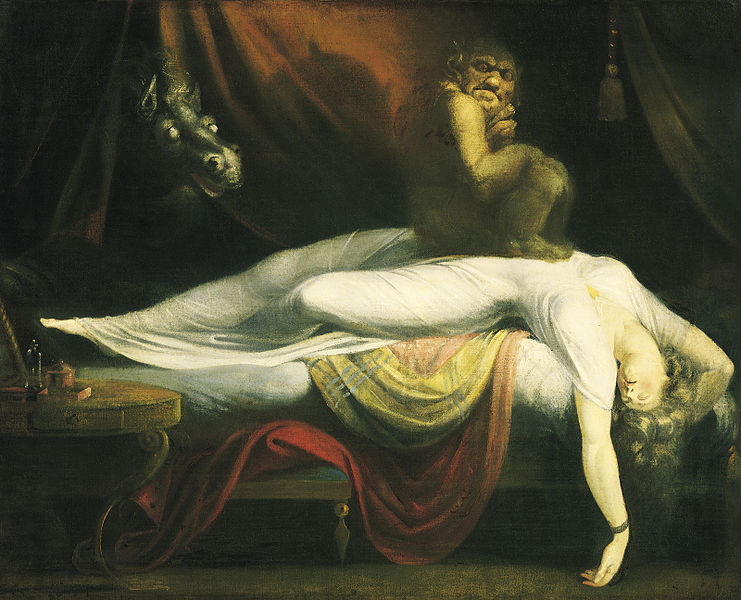 Henry Fuseli, The Nightmare, 1781, oil on canvas, 40” x 49 ⅞”, Detroit Institute of Arts, Detroit, Public Domain via Wikimedia Commons.
Henry Fuseli, The Nightmare, 1781, oil on canvas, 40” x 49 ⅞”, Detroit Institute of Arts, Detroit, Public Domain via Wikimedia Commons.
The Romantic art movement in European art endured approximately sixty years, from the late eighteenth century until the middle of the nineteenth century. Romantic artists attempted to elicit strong emotions from a viewer by presenting dramatic, exotic and sometimes frightening subjects. Many Romantic artists painted dreams because they occur when the conscious mind was asleep and no longer had control.
Henry Fuseli spent his career in England, but was raised in Switzerland in an intellectual household with parents who valued freedom of expression and had a reverence for the irrational. Fuseli presented moods of horror and painted the demonic fantasies of nightmares and the dark terrain of the subconscious.
The woman lying on the bed in this painting is experiencing a nightmare. Perched upon her stomach is an incubus, or a male goblin, that, according to several legends, had sex with sleeping women. Emerging from the curtain in the background is another mythological creature, called a mara, which suffocated people when they slept.
Fuseli reproduced this macabre image in prints and it circulated widely. One eventually hung in the office of Sigmund Freud.
Happy Halloween from The Art Minute!
 Henry Fuseli, The Nightmare, 1781, oil on canvas, 40” x 49 ⅞”, Detroit Institute of Arts, Detroit, Public Domain via Wikimedia Commons.
Henry Fuseli, The Nightmare, 1781, oil on canvas, 40” x 49 ⅞”, Detroit Institute of Arts, Detroit, Public Domain via Wikimedia Commons.
 Henry Fuseli, The Nightmare, 1781, oil on canvas, 40” x 49 ⅞”, Detroit Institute of Arts, Detroit, Public Domain via Wikimedia Commons.
Henry Fuseli, The Nightmare, 1781, oil on canvas, 40” x 49 ⅞”, Detroit Institute of Arts, Detroit, Public Domain via Wikimedia Commons.

